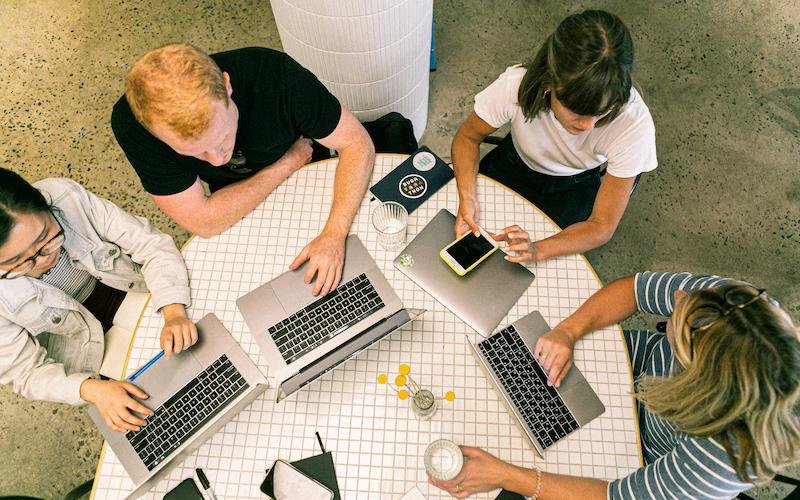By Scio Team
Whether you are coding software or managing a company that creates software, the name of the game is optimization: there’s always a better way to do things, a wrinkle to iron out, a bump to flatten quickly. However, even if we somehow reach a perfect process, it will probably not last long. Technology is always moving forward.
Then why is it often difficult to adjust your development practices to ensure you always obtain a better outcome? Why is it so hard to leave behind “tried and true” methods of development to try new ideas to better the efficiency of any process?
It’s not surprising to find out that the root of a lot of these issues lay within human psychology, specifically a phenomenon that can help us understand how we conceive our practices, and the sooner we can work towards mastering how it works, the better our outcomes will become: cognitive inertia.
The human side of change.
“Cognitive inertia” is a term gaining popularity in software development, and with a good reason: it aptly describes why it might be so hard to change approaches to development, even in the face of an evident need of trying something else:
“Changing management is an age-old problem; migrating to a new process with new technologies can represent a big change. The management teams are met with cognitive inertia and a long list of reasons why new methods and technologies will not work. So, instead, they work harder, and the harder they work, the farther behind they get”, points out Barry Hutt, CRO at Viviota Software, in his post “Cognitive Inertia a great challenge to innovation.”
It’s a paradoxical outcome, but to begin to understand this issue, we should define clearly what “cognitive inertia” is. Cognitive inertia is not “belief perseverance”, or the phenomenon of maintaining the same belief even when presented with new information. Instead, cognitive inertia is the inability to change how a person processes information, which is a much more complicated framework that involves motivation, emotion, and developmental factors.
Its consequences can be seen easily in software development when we think of practices like testing or brainstorming, which makes the old adage “work smarter, not harder” a difficult one to implement, especially as a project or an organization grows in complexity.
“Cognitive inertia evolved because the brain optimizes energy efficiency. If you keep the same behavior and don’t question it, your brain conserves space and can make faster, simpler decisions. On a social level, maintaining consistent behavior preserves social cohesion by maintaining social roles and responses”, explains the blog “Cognitive Inertia: The Status Quo Bias” by Joseph Adebisi.
However, it’s obvious why in a field like software development this can bring problems in the long run. After all, even if roles in a development team are clearly defined, the multitude of solutions that need to be reached at every step of the process (from the ultimate goal of the client to fixing the smallest of bugs) benefit from the creativity that surges from having multiple approaches.
The key to collaboration

The approach of Scio to this issue, both internally and in the work, we do with our clients, is knowing that a “solution” is more than having the seemingly right answer for everything; it is developing a process that lets you question and rework the methods you used to arrive at to fine-tune the outcome.
“When you build walls, it’s easy to keep piling bricks on, one after another, in every house you build. That might work for a while, but if now you are looking to build something with a different purpose, like a cathedral or a hospital, will that approach still be the best?” comments Luis Aburto, CEO, and Co-Founder of Scio. “What happens when you partner with someone that comes and says ‘hey, maybe this bricklaying will not support the multiple stories we need for a hospital, so what if we try this instead?’”
A culture of constant sharing through collaboration, then, might be a way to avoid the pitfalls of cognitive inertia. After all, cognitive inertia, as real inertia does, keeps the same trajectory if nothing initiates a change, so the more different perspectives you have, the stronger the final product may be.
“Human beings love to help. Doing it productively and seeing people overcome obstacles it’s a very rewarding experience, and at a company like Scio, where collaboration is a key part of us, you also get the benefit of cross-pollinating different parts of your organization”, says Yamila Solari, Co-Founder and Coaching Leader at Scio. “If you create a culture of mutual help and support, where one person talks to another and so on, your culture is always enriching itself.”
This makes coaching one of the best tools Scio has to keep our organization moving forward, making sure that knowledge gets shared around between collaborators to strengthen the outcomes of every person and every team. This circles back to our earlier article about outputs and outcomes in software development, where we try to understand the purpose and goals of any project we collaborate with before deciding on the approach that will work best for that specific job. Sometimes laying bricks in the usual way will be enough, but that doesn’t mean that developers shouldn’t have an open mind to try new things if they hit a snag during development.
Cognitive inertia in the day-to-day

However, one should not assume that the issue of cognitive inertia only affects an organization at the macro level, or that it is always a bad thing; it’s part of our daily work whether we notice it or not. For example: if you are focused on a task, and an interruption comes (be it a software update, an Internet outage, an unforeseen meeting, or even a coworker just stopping by to ask something), how difficult is it for you to resume your rhythm at full speed?
Martin Cracauer, CTO of the software development firm Third Law, holds the opinion that the way our brain absorbs information and uses it in the short term is a form of cognitive inertia, and keeping information properly compartmentalized is a way to ensure a task, or a whole project, doesn’t get derailed:
“A lunch break absorbing lots of information that has nothing to do with your work task is relaxing because it does not compete with the work task memory. But a work meeting that touches actual work stuff competes for the same cognitive machinery. […] Your Company makes its money on the programming tasks that are completed today, so you just traded away the brain state needed for Today’s Task in favor of some imaginary later benefit.”
What this means is that some form of cognitive inertia (the one that puts a developer “in the zone” when writing code) can be used to the advantage of the development cycle if we structure the project with clear goals and purposes that need minimal interruptions, and let the developer to fully focus in the day to day progress.
The Agile methodologies, when well implemented, help with this as it lets organizations like Scio maintain a high level of cohesion in the development cycle that doesn’t give enough space for distractions. A well-managed team knows its goals, the potential pitfalls, and biases that can surge in development, and has the support to focus on the tasks that actually get things done, letting the outcome dictate everything else the product might need.
Cognitive inertia, then, is not inherently a good or bad thing in software development; a well-balanced organization can manage, and even use it to its advantage. After all, the software is not about working harder, it’s about implementing the smartest approach and letting the results speak for themselves.
The Key Takeaways:
- Cognitive inertia is not stubbornness, it’s the way some people get used to processing information in their day today.
- Changing this inertia can be difficult, but is not an insurmountable problem, and it’s a critical need for software development.
- Collaboration and tools like coaching can be effective in mitigating the effects of cognitive inertia, feeding constant new information to avoid settling on a single approach.
- However, cognitive inertia is not all bad; it helps a developer to focus as long as interruptions and problems derived from sudden changes of course are avoided.
- It all comes down to good management. Being aware of bias and cognitive traps, constantly encouraging new knowledge between collaborators, coaching and a good implementation of Agile methodologies can result in a healthy development environment that guarantees a good outcome.
